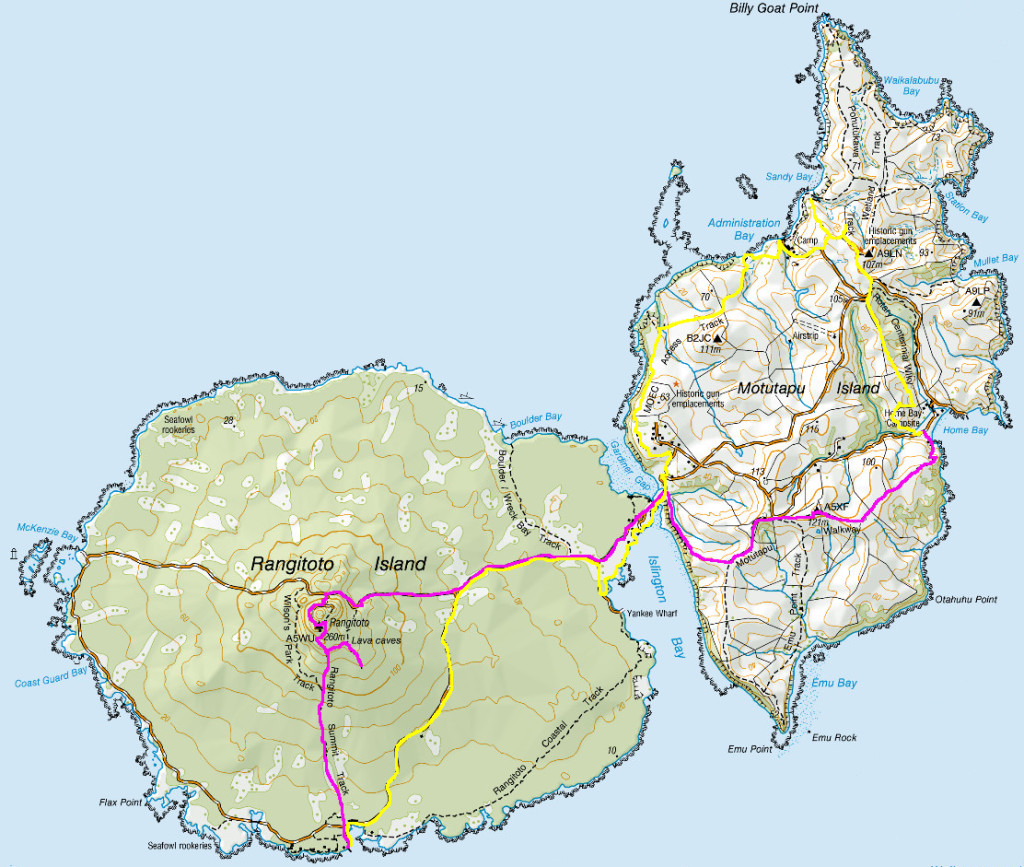Motutapu and Rangitoto Islands

You will have to take a ferry to Rangitoto Island and walk across the causeway to get to Motutapu Island most days as the ferry direct to Motutapu is only once a week.
Many historic buildings remain and there are an abundance of well marked walking trails with good signage to sites.
Do your homework before you go.
Maori did not just leave footprints – more than 300 archaeological sites have been recorded, which include undefended settlements, terraced house sites, storage pits, cooking areas, middens, quarry and stone-working sites, and paa.
It has more than 300 Maori pa, kainga (villages), kumara storage pits, former gardens and archeological sites, as well as evidence that settlers witnessed Rangitoto Island erupting 600 years ago. Archeologists have found the footprints of people and dogs preserved in solidified ash layers after Maori returned to Motutapu between eruptions. Ngati Tai is the principal iwi with features of Arawa and Tainui traditions.
In 1840 Europeans claimed ownership of Motutapu Island, and homesteads were established at Emu Bay and Home Bay. Tall Norfolk pines and other exotic trees were planted after deforestation following the eruption, and extensive farming began. The last farmhouse was a villa built in 1901 for the Reid Family, which still remains preserved on the island as a reminder of the homesteads once seen on the shores. Deer, wallabies, and other exotic animals were introduced to Motutapu Island as a visitor attraction in the 1860s and by the early 20th century it had become a popular visitor destination (hosting Victorian picnic parties of over 10,000 people).
World War 11
In 1936 work began on the Motutapu counter-bombardment battery. Roads had been formed, and the battery and observation post were completed one year later. The camp (now known as our Main Camp) was established in 1937 before World War II started in 1939. Additional buildings were needed when the island population grew to 200 people, and deepwater wharfing facilities were built for the US Navy. After the war ended in 1945, the entire site was abandoned five years later.


